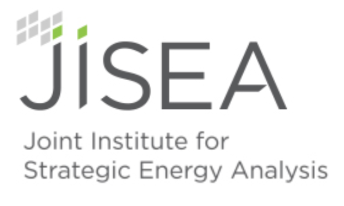Report Explores Key Supply Chains and Advanced Manufacturing of Small Hydropower Systems
August 31, 2018 — This article updates the 2016 blog regarding hydropower turbine and trade analysis, undertaken collaboratively by the National Renewable Energy Laboratory (NREL) and the Oak Ridge National Laboratory (ORNL). We can happily report the final CEMAC report is published! This project analyzed the small hydropower (SHP) market, including the tradeflows, detailed costs, and potential markets, to help determine the status and opportunities along the supply chain.
Small hydropower, both to install domestically and export technology, has significant potential for the United States. Some key findings from the report:
- Only 3% of U.S. dams currently generate electricity. The remaining non-powered dams (NPDs) represent a substantial domestic market opportunity with the potential to add 4.8 gigawatts (GW) of new electricity generation capacity by repowering NPDs, utilizing advanced technologies, and low-cost financing by 2050. If the full 4.8 GW was utilized, the state of Idaho could be powered with less than the 5 GW of net summer capacity in 2018!
- A key strength in the U.S. hydropower manufacturing sector is the significant experience and availability of a skilled workforce, which can be leveraged by the SHP manufacturers to meet the domestic and foreign potential. This is key for new SHP growth. The primary factors affecting manufacturing decisions for SHP systems include clustered areas of the country with regional strength in SHP, skilled labor availability, product quality, proximity of suppliers to excellent resources, existing supply chains, and existing or growing markets—all are in abundance in the United States.
- ORNL and NREL worked together to select and define a representative system for NPDs made up of two 5-MW Kaplan-style turbines. The manufacturing cost of one representative system (i.e., 2x5 MW turbines) was found to be approximately $510,000, with a total assembled cost of approximately $550,000. Note, this manufactured cost of the representative system does not include the generator or other equipment nor transportation of parts to site or the construction of the SHP site.
- The levelized cost of electricity (LCOE) is sensitive to the overall electro-mechanical equipment cost, but civil works are the biggest driver for SHP LCOE. Electro-mechanical equipment (e.g. the turbine and generator) contributes 8%–30% of the total LCOE for NPDs, while civil works constitute between 18% and 58% of the project LCOE (as seen in the image below). Without addressing the construction and installation aspects of SHP, advances in the turbine may not drive overall cost decreases.
- The potential for SHP NPD systems outside of the United States could be several times bigger than the U.S. potential of 4.8 GW. Considering the top five foreign export markets of Chile, China, Columbia, India, and Japan, the work has found that these countries have nearly 72 GW! of technical potential that could be serviced with SHP installations. Utilization of existing U.S. manufacturing capacity and expertise, along with economies of scale benefits, could result in increased global competitiveness through lower investment requirements and component costs, which could lead to increased U.S. strength in the export of SHP systems and components.
- Additive manufacturing (AM) or 3D-printing has significant potential for printing complex parts and tooling (e.g. molds) to produce components, rapid prototyping of scale models for testing, and decreasing the innovation and cycle time to get products to market. AM and light-weight composites, such as carbon fiber, could allow for radical design changes in SHP systems, but simply direct printing current designs or swapping out composite components are unlikely to give significant cost savings.
With the continued support of the U.S. Department of Energy's Water Power Technologies Office (WPTO) through research and development funding, future analysis could look at, for example, key areas or components AM and composites could be used in SHP systems, different SHP systems, such as canals and conduits, and help inform and guide strategic investment decisions along the manufacturing value chain of SHP.
Thank you to WPTO for their valuable support during this project, in particular the WPTO lead Marisol Bonnet. NREL would also like to thank ORNL's strong contributions, including the ORNL market team and the author Patrick O'Connor. Access the full report titled "Analysis of Supply Chains and Advanced Manufacturing of Small Hydropower System."
